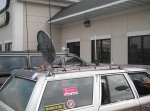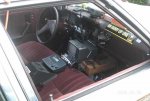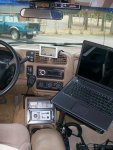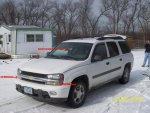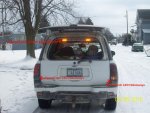Rico, I've been doing severe weather spotting in Central Indiana since 1990 or so and that was before I got my amateur radio license. The general concept of Skywarn spotting is to get people in a position to observe the storms and report their observations. Assuming you have enough spotters either in fixed locations or mobile, you really don't need to have people "chasing" in order to keep up with the weather. Of course, we never seem to have enough trained spotters so I welcome your interest in Skywarn.
In Skywarn, your net control operators should either have a direct or closely indirect connection with the NWS forecasters. It's up to the forecasters to identify their areas of interest and pass that along to your net control who can then make sure spotters are in the right places. I've never tried mobile spotting with radar, but I think it would be a huge distraction. Your number 1 priority while spotting is to stay safe--don't be a hazard on the road, don't put yourself in a position where you get hit by the storm, and make sure you have effective escape routes. Number 2 is to observe the weather--pay attention to wind directions and cloud formations--your spotter class should teach you that. Number 3 is to communicate--your observations won't do much good if the NWS doesn't hear what you are seeing.
Keep in mind that the radar cannot see what's happening on the ground. The lowest beam of the WSR-88D radar is 0.5 degrees above the horizon. As the earth curves, that beam gets further and further away from the surface of the earth as the beam moves out from the radar. That's where trained spotters in the field come in. They can tell the NWS forecasters what's happening at the surface and provide the NWS with "ground truth" verifications of what they see on radar.
For more background on correlating radar images to real world observations, check out the presentations by Paul Sirvatka and John Kwiatkowski at
http://w9nws.org/node/52.




